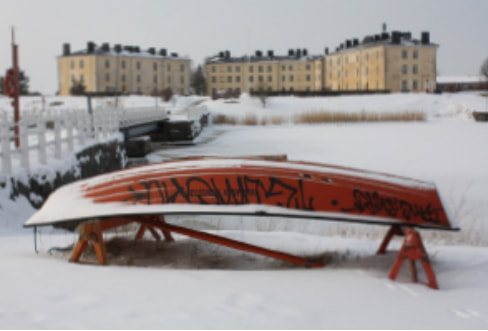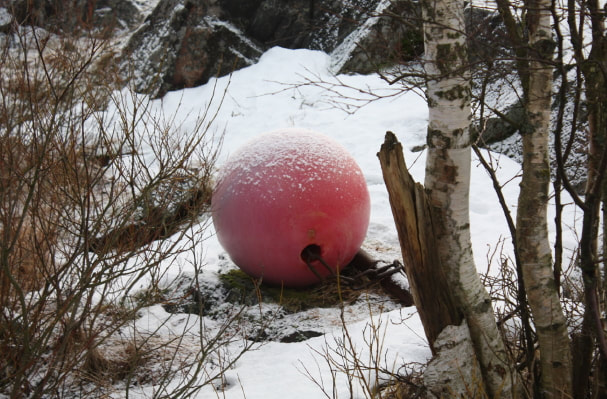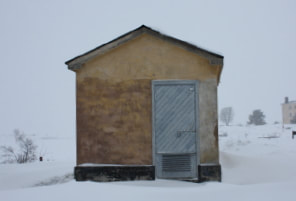|
|
Reviews of the book"This book is a testament to the living body in the way it assimilates all that is inscribed upon it. It makes the body familiar and safe in sharp contrast to the way writings on techniques of the body tend to alienate us from our bodily selves. "
Preethi Athreya, Choreographer (Chennai, India) |
|
Reviewed in Journal for Artistic Research, June 2022
"Reading this text is an invitation to consider dwelling, what happens when we take seriously the information that comes available to us through sustained periods of site-based dance practice – resources such as imagination, kinesthetic attunement, sensory detail, compositional awareness.... This book could be considered a methodology text for the field of artistic research or practice-led research, as it provides a clear set of principles for site-based research, articulates contemporary processes and theoretical frames around the concept of inter-materiality, clearly evokes the performance events that emerged through the research period, and also critically discusses the complexities, and tensions, that occurred in the development of making a performative ‘work’ to articulate the research. In Berlin, this eventuated in aperformance, an event held in the liminal space where everyday life merges with a research sharing for invited guests, without public outreach, without drawing attention to itself as being anything other than movement in the everyday life of a space. .... Suomenlinna//Gropius is a touchstone of a book – the kind of book you can return to again and again. It orients us to think-with a performance project from many points of view, through a variety of registers of writing – poetic, drawn, reflective, critical, personal, intimate, theoretical. It orientates the reader to the richness of the spaces in which we live, the profound opportunities we have to work through the sensory resources of a body, to attend to the intense and multiple layers of the environments in which we dwell." Alys Longley in Journal for Artistic Research Read the full review |
"I have spent much time with this book in my hands, on the sofa, in the garden, on the train, in bed, under the tree bursting with lemons, in winter and now in spring...
I've been reflecting on themes of 'inheritance' in relation to 'objects', considering in particular how story might be an 'object'; or voice an 'object'; or movement scores an object, and then here, in all its materiality, is this book - an object - resting beside me in the garden, next to the spade and bucket. The words therein are also objects, full of flesh, full of presence; the ways in which Paula talks, writes, sings about her site-dancing also seem to me 'objects' in that they are collected, sorted, arranged and rearranged with such care, deftness and purpose. The layering of these things amaze me; how ... bodies, site, stories, voices, words, materialities, histories, archaeologies and movements are re/constructed, ordered, inverted and how this book, also a body, moves so easily between factual and fictional worlds. Gropius / Suomenlinna is an artist book and also something other than that - a historical document; a space of/for learning; a memory of something I never lived and then again I did... The words arrive into my world, here in rural Victoria, Australia, like a morel mushroom. We’ve recently been hunting and finding morels on our bush property. Morels grow at first deep under the earth and then fruit – like honeycombs – in spring. They like to emerge just at the section of soil that is between barren and fertile, by old dead logs. They are hard to see and harder to cultivate. They, like Paula’s practice, spread mostly under lines of visibility, across the forest floor in erratic and yet interconnected, far-reaching patterns, and fruit, for a short time, in spring. They are prized for their unique structure, subtle earth flavours and for the fact that they cannot be farmed. They insist on being gathered in the wild." Amaara Raheem (PhD), dance artist and artist-researcher (Melbourne, Australia) |
Reviews
"The immediacy of Paula’s experience leaps off the page, in Suomenlinna I want to feel the rocks she’s touching, taste the snow. In Gropius the first images of the site fill me with terror, I want to flee from the exposure; what courage and integrity it takes to move here, so close to home, face to face with the weight of that traumatic history...
The writing flows effortlessly between registers and voices, from poetic to scholarly, from experiential to theoretical, from deep time to recent history, from architecture to archives, from English to German and back again.
This small beautifully crafted book, interspersed with images from both the sites over time and Paula’s presence in them, will become a collector’s item. Essential reading for any artist working on site and any mover creating process or body based work."
Helen Poynor, Independent movement artist, Director, Walk of Life workshop and training programme (UK)
"The immediacy of Paula’s experience leaps off the page, in Suomenlinna I want to feel the rocks she’s touching, taste the snow. In Gropius the first images of the site fill me with terror, I want to flee from the exposure; what courage and integrity it takes to move here, so close to home, face to face with the weight of that traumatic history...
The writing flows effortlessly between registers and voices, from poetic to scholarly, from experiential to theoretical, from deep time to recent history, from architecture to archives, from English to German and back again.
This small beautifully crafted book, interspersed with images from both the sites over time and Paula’s presence in them, will become a collector’s item. Essential reading for any artist working on site and any mover creating process or body based work."
Helen Poynor, Independent movement artist, Director, Walk of Life workshop and training programme (UK)







